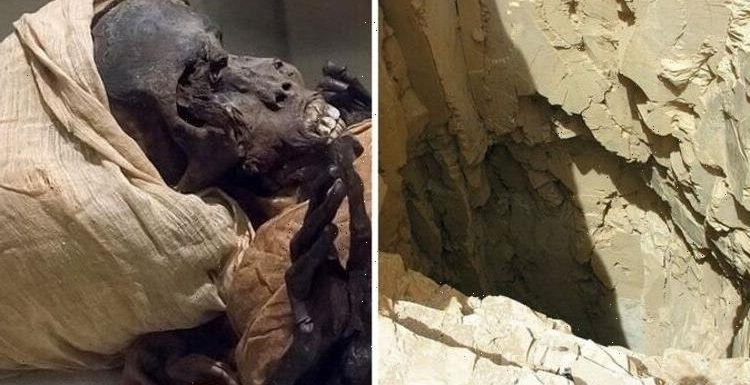
Seqenenre Tao shocking origins explained
We use your sign-up to provide content in ways you’ve consented to and to improve our understanding of you. This may include adverts from us and 3rd parties based on our understanding. You can unsubscribe at any time. More info
Sir William Matthew Flinders Petrie is one of the most important and influential figures in the history of Egyptology, having largely introduced the Western world to the archaeological wonders of our ancient ancestors. The Briton began his work in the mid-1880s, excavating many of the most important archaeological sites in Egypt alongside his wife, Hilda Petrie. Archaeologists have since flocked to the region in their droves, unearthing an abundance of relics offering an incredible insight into the way Egyptian society once worked.
With more than a century of excavations in tow, archaeologists continue to find new tombs and treasure, one of which was explored by the Smithsonian Channel in its 2020 documentary ‘Tomb Hunters’.
Known today as the ‘Royal Cache’, it is an extraordinary collection of ancient Egyptian mummies of some 11 pharaohs were discovered in 1881, and moved to a modern display area in the new National Museum of Egyptian Civilization last year.
Alongside legendary kings like Ramesses the Great and Seti I was a more mysterious pharaoh — Seqenenre Tao.
An inscription on his coffin reads “Seqenenre the Brave”, but archaeologists could not believe their eyes after discovering what was inside.


Dr Richard Shepherd, a consultant forensic pathologist, told the documentary: “When we look at the front of his face, it certainly doesn’t look normal.
“It’s very distorted.”
He added: “The whole of the nose, the eye on the right, the bridge of the nose, the eye on the left, they are all very distorted.”
The documentary’s narrator explained Seqenenre is the only mummy ever found with “such violent injuries”.

Dr Shepherd specialises in the investigation of suspicious deaths.
He pointed out two wounds on the right side of Seqenenre’s head, saying: “This is a wound where a piece of the skull has been forced in.
“It has been smashed into his brain, producing this large crater-like effect.”
Dr Shepherd believes an outer part of Seqenenre’s skull would have “flipped off” as the weapon with which he was attacked was removed.
DON’T MISS:
Archaeology: Nazi U-boat wreck ‘beats Tutankhamun’ [EXPERT]
Archaeologists puzzled by ransacked burial chamber inside pyramid [INSIGHT]
Ancient Rome’s ‘best kept secret’ revolutionised Italian capital [REVEALED]

An autopsy carried out 100 years ago by anatomist Elliot Smith concluded Seqenenre died from axe wounds received in battle.
A vivid description of the injuries inflicted upon Seqnenre can be found in an archived copy of ‘History Of Egypt, Chaldaea, Syria, Babylonia, and Assyria, Volume 4’.
It reads: “It is not known whether he fell upon the field of battle or was the victim of some plot; the appearance of his mummy proves that he died a violent death when about forty years of age.
“Two or three men, whether assassins or soldiers, must have surrounded and despatched him before help was available.

“A blow from an axe must have severed part of his left cheek, exposed the teeth, fractured the jaw, and sent him senseless to the ground; another blow must have seriously injured the skull, and a dagger or javelin has cut open the forehead on the right side, a little above the eye.
“His body must have remained lying where it fell for some time: when found, decomposition had set in, and the embalming had to be hastily performed as best it might.”
The lack of wounds on Seqenenre’s hands suggests he was unable to defend himself.
A 2021 CT scan on his mummified body revealed a key piece of information in his hands.
The research, published in the journal Frontiers in Medicine, revealed Seqenenre’s hands are held in a “cadaveric spasm”, frozen in their position at the moment of death.
The authors claimed this kind of spasm “typically affects the hands and limbs of individuals who were subjected to violent deaths and whose nervous systems were disturbed at the moment of death, for example, a drowning victim’s hand clenching on weeds from the waterbed.”
Dr Sahar Saleem, from Cairo University, suggested he may have been subjected to a “ceremonial execution” following an unsuccessful battle against the Hyksos.
In April 2021, Seqenenre was moved to the National Museum of Egyptian Civilization along with those of 17 other kings and 4 queens in an event termed the Pharaohs’ Golden Parade.
Source: Read Full Article